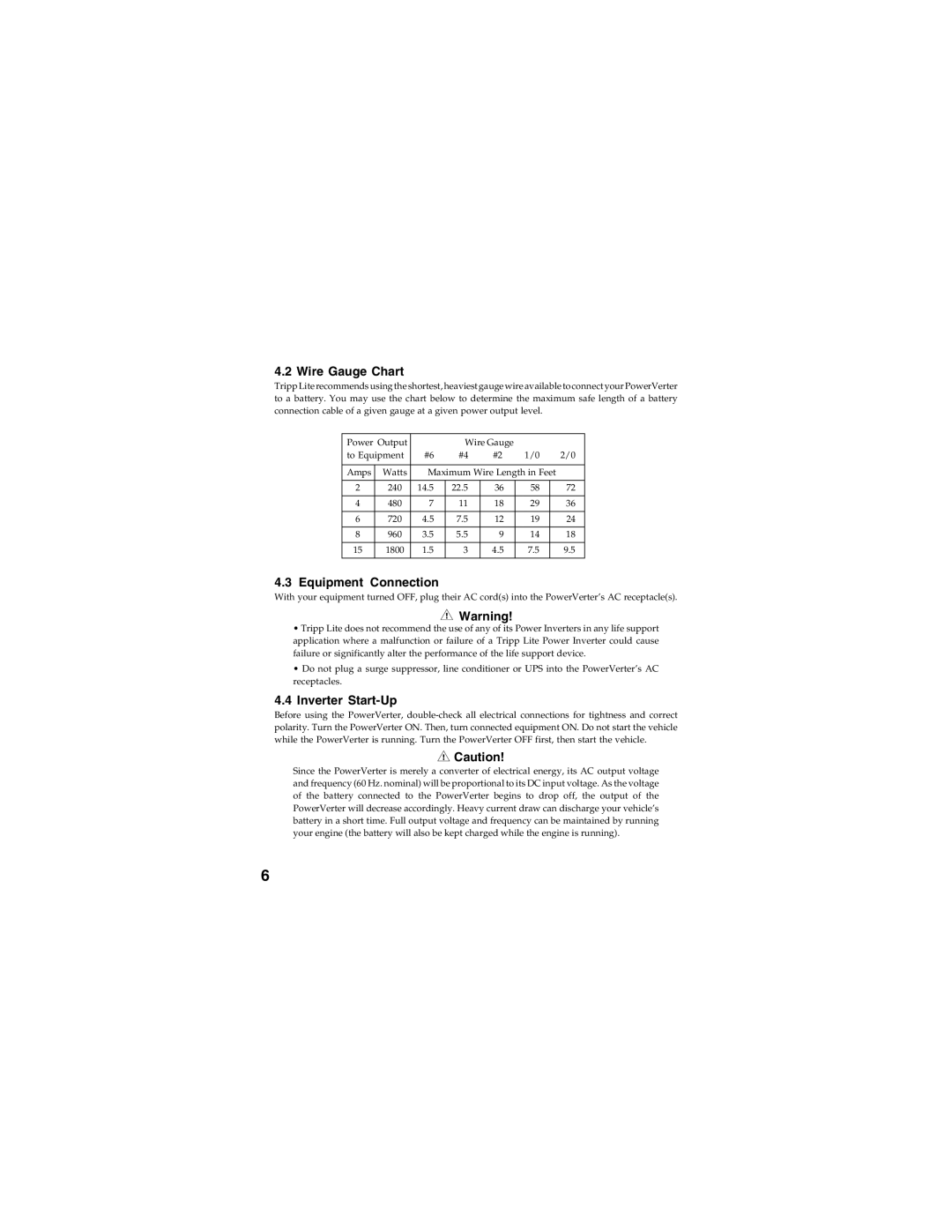4.2 Wire Gauge Chart
Tripp Lite recommends using the shortest, heaviest gauge wire available to connect your PowerVerter to a battery. You may use the chart below to determine the maximum safe length of a battery connection cable of a given gauge at a given power output level.
Power Output |
| Wire Gauge |
|
|
| ||
to Equipment | #6 | #4 | #2 | 1/0 |
| 2/0 | |
|
|
|
|
|
|
|
|
Amps | Watts | Maximum Wire Length in Feet |
| ||||
|
|
|
|
|
|
|
|
2 | 240 | 14.5 | 22.5 | 36 | 58 |
| 72 |
|
|
|
|
|
|
|
|
4 | 480 | 7 | 11 | 18 | 29 |
| 36 |
|
|
|
|
|
|
|
|
6 | 720 | 4.5 | 7.5 | 12 | 19 |
| 24 |
|
|
|
|
|
|
|
|
8 | 960 | 3.5 | 5.5 | 9 | 14 |
| 18 |
|
|
|
|
|
|
|
|
15 | 1800 | 1.5 | 3 | 4.5 | 7.5 |
| 9.5 |
|
|
|
|
|
|
|
|
4.3 Equipment Connection
With your equipment turned OFF, plug their AC cord(s) into the PowerVerter’s AC receptacle(s).
![]() Warning!
Warning!
•Tripp Lite does not recommend the use of any of its Power Inverters in any life support application where a malfunction or failure of a Tripp Lite Power Inverter could cause failure or significantly alter the performance of the life support device.
•Do not plug a surge suppressor, line conditioner or UPS into the PowerVerter’s AC receptacles.
4.4Inverter Start-Up
Before using the PowerVerter,
![]() Caution!
Caution!
Since the PowerVerter is merely a converter of electrical energy, its AC output voltage and frequency (60 Hz. nominal) will be proportional to its DC input voltage. As the voltage of the battery connected to the PowerVerter begins to drop off, the output of the PowerVerter will decrease accordingly. Heavy current draw can discharge your vehicle’s battery in a short time. Full output voltage and frequency can be maintained by running your engine (the battery will also be kept charged while the engine is running).
6
